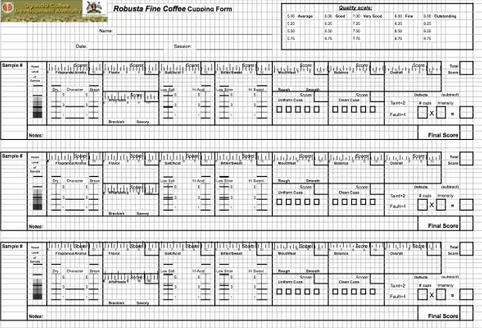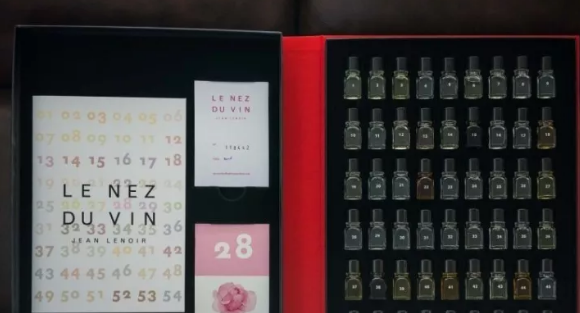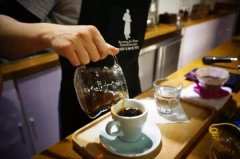Brief introduction of R Grader examination for Robusta Coffee tasters
To be a Robusta Q-Grader, you must pass all the Robusta Grader exams. In general, the test method is similar to the Arabica Q-Grader test, but there are different concepts or formulas. For example, sensory skills sensory skills and organic acids match matching pairs organic acids.
The first part
Robusta coffee theory written test.
100 questions (right / wrong) about testing and grading, baking, extraction, planting, harvesting and processing of Robusta coffee cups.
The second part
Sensory skills test (including 3 tests). Examiners must determine three different concentrations of salt, acid, sweet and bitter odorless solutions, and determine the components and concentrations of salt, acid, sweetness and bitterness in the mixture.
Test 1: examiners taste the sample solution (4 flavors: salt, sour, sweet, bitter), with three concentrations for each solution. Next, sort by intensity / concentration.
Test 2: blind test. After all the 12 (4x3) solution samples were out of order, the examinees were sorted according to the type of taste and its intensity.
Test 3: mixed test. Examiners taste 9 (3-3) mixed solution samples, which are mixed with 2 basic solutions (12 basic solutions from the second part). Examiners must correctly identify the type and strength of the basic solution in each mixture.
The third part
Cup test skills test (5 tests). Cup test 5 groups of coffee 6 cups of samples each, the use of coffee includes / is not limited to:
Brazil Robusta
East Africa / Robusta, Uganda
Robusta, India
Indonesia / Asia Robusta
Robusta coffee in West Africa (affected by location and availability).
Robusta coffee cup test form

The cup test is based on the examinee's rating of the coffee, the accuracy of the description, and the consistency.
The fourth part
Olfactory skills test (2 parts, 4 tests). The purpose of this test is to assess the examinee's ability to identify the common wet and dry aromas of robusta coffee.
Note that two different types of scent bottles were used in the Robusta olfactory skills test: the Le Nez du Vin (wine) wine series and the Le Nez du Cafe series coffee series.
Le Nez du Vin (wine) wine series fragrance bottle

Le Nez du Cafe series coffee series fragrance bottle
Examiners need to match 6 of the 9 aromas, and then identify 3 specific aromas of the following four categories. The four categories of aromas are as follows:
Enzyme flavors: odors derived from planting, variety and processing
Caramelized flavor: derived from the early stages of baking
Dry distillation flavor: the smell derived from the later stage of baking
Defective flavor: odor caused by storage, handling and processing errors
The fifth part
Triangle cup test skills test (5 tests). The triangle cup test is to test the examiner's ability to distinguish coffee from the unique properties of coffee flavor in different regions. Examiners must have three coffees in each group (a total of six groups) and find out one different coffee.
Part VI
Organic acid matching (1 test).
Examiners must identify the most common acids (6) found in robusta coffee: acetic acid, malic acid, phosphoric acid, citric acid, lactic acid and quinic acid.
8 groups, 4 cups of coffee in each group. Participants had to determine which group of two coffees were added with acid, and to indicate which acid was added.
Part VII
Robusta coffee raw bean grading (1 test). The examinees received three kinds of raw bean samples of Robusta coffee with 350g each. According to the raw bean classification standard of Uganda Coffee Development Authority (UCDA), each raw bean defect was correctly identified, the total number of defects was marked, and the grade of raw coffee bean was determined.
Part VIII
Robusta coffee cooked bean grading (1 test). Examiners identify the number of roasted defective roast defects in 100g samples of cooked coffee beans and correctly grade 100g samples: commercial commercial, high quality premium or fine Fine.
Part IX
Baking defect identification (1 test). The purpose of the test is to test the examinee's knowledge of the baking degree of the UCDA Robusta cup. Examiners will receive four plates of coffee. One of the plates meets the Robusta cup test standards, and the other three plates have different baking defects: a) under-roasted; b) baked, c) over-roasted;d) underdeveloped. Examiners must identify baking flaws and how to draw conclusions.
Important Notice :
前街咖啡 FrontStreet Coffee has moved to new addredd:
FrontStreet Coffee Address: 315,Donghua East Road,GuangZhou
Tel:020 38364473
- Prev

What's the key to a good cup of coffee? Coffee lovers must learn, a complete knowledge of coffee
Professional barista communication Please follow the coffee workshop (Wechat official account cafe_style) what is the key to a good cup of coffee? Good brewing skills and utensils are indispensable, but high-quality coffee beans are the most important element. Do you have no idea about coffee beans, or are you often dizzy by a bunch of coffee nouns? It doesn't matter. In the following article, we will use the simplest.
- Next

About Robusta Q-Grader, Robusta Robusta Grader exam
To be a Robusta Q-Grader, you must pass all the Robusta Grader exams. In general, the test method is similar to the Arabica Q-Grader test, but there are different concepts or formulas. For example, sensory skills sensory skills and organic acids match matching pairs organic acids. The first part is the knowledge of Robusta coffee theory.
Related
- Beginners will see the "Coffee pull flower" guide!
- What is the difference between ice blog purified milk and ordinary milk coffee?
- Why is the Philippines the largest producer of crops in Liberia?
- For coffee extraction, should the fine powder be retained?
- How does extracted espresso fill pressed powder? How much strength does it take to press the powder?
- How to make jasmine cold extract coffee? Is the jasmine + latte good?
- Will this little toy really make the coffee taste better? How does Lily Drip affect coffee extraction?
- Will the action of slapping the filter cup also affect coffee extraction?
- What's the difference between powder-to-water ratio and powder-to-liquid ratio?
- What is the Ethiopian local species? What does it have to do with Heirloom native species?

